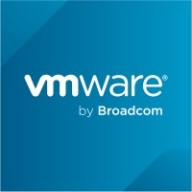

Cloudify and VMware Aria Automation are products competing in the cloud management space. Cloudify seems to have a cost advantage, whereas VMware Aria Automation offers a richer feature set, potentially providing a more comprehensive solution worth the investment.
Features: Cloudify provides adaptive automation and orchestration for multi-cloud and edge environments, dynamic blueprinting, and the flexibility of an open-source model. VMware Aria Automation offers deep integration with VMware’s ecosystem, advanced automation features, and strong security measures suitable for enterprise-grade environments.
Room for Improvement: Cloudify could enhance its structured customer service and add more direct support channels. To compete better at the enterprise level, its automation features could be expanded. There is room for further development in its orchestration standards. VMware Aria Automation might improve its initial setup complexity to ease new user adoption. It could also broaden its interoperability with third-party tools. Pricing transparency could be improved to offer clearer ROI justifications for prospective customers.
Ease of Deployment and Customer Service: Cloudify features a straightforward deployment process, leveraging community forums for user support, which may affect response times. VMware Aria Automation offers integrated deployment paths within VMware's ecosystem, supported by comprehensive professional services ensuring faster issue resolution.
Pricing and ROI: Cloudify generally offers lower upfront costs and appeals with significant ROI for businesses seeking adaptability and long-term operational savings, particularly appealing to startups. VMware Aria Automation demands a more significant initial investment but is reported to deliver impressive ROI through its extensive features and integrations, making it suitable for larger enterprises.
| Product | Market Share (%) |
|---|---|
| VMware Aria Automation | 9.5% |
| Cloudify | 1.8% |
| Other | 88.7% |


| Company Size | Count |
|---|---|
| Small Business | 3 |
| Large Enterprise | 6 |
| Company Size | Count |
|---|---|
| Small Business | 32 |
| Midsize Enterprise | 24 |
| Large Enterprise | 130 |
Cloudify is an open-source orchestration-first cloud management platform. The solution allows applications to efficiently run across multiple cloud or data center platforms for premium multi-cloud infrastructure automation and orchestration. It provides infrastructure automation using environment as a service (EaaS) technology to deploy and continuously manage any cloud, private data center, or Kubernetes service from one central point while leveraging existing toolchains.
Cloudify Product Highlights
Cloudify Features
Cloudify has many valuable key features. Some of the most useful ones include:
Cloudify Benefits
There are many benefits to implementing Cloudify. Some of the biggest advantages the solution offers include:
VMware Aria Automation is a cloud management tool that allows companies to simplify their cloud experience through a modern automation platform. The solution is designed to deliver self-service clouds, multi-cloud automation with governance, and DevOps-based security and infrastructure management. It helps organizations improve IT agility, efficiency, and productivity through its various features.
VMware Aria Automation has multiple use cases that include the following:
VMware Aria Automation Features
VMware Aria Automation has various features that allow users to easily perform operations. Some of the solution's capacities include:
VMware Aria Automation Benefits
VMware Aria Automation offers its users various benefits. Some of the biggest advantages that the solution brings to companies that utilize it include:
Reviews from Real Users
Awais J., CTO/CEO at a tech services company, likes VMware Aria Automation because it saves a lot of time, provides more visibility, and has extensive automation capabilities.
An IT consultant at a government rates VMware Aria Automation highly because the product gives you flexibility to analyze and consume resources.
We monitor all Cloud Management reviews to prevent fraudulent reviews and keep review quality high. We do not post reviews by company employees or direct competitors. We validate each review for authenticity via cross-reference with LinkedIn, and personal follow-up with the reviewer when necessary.